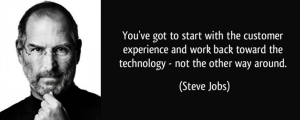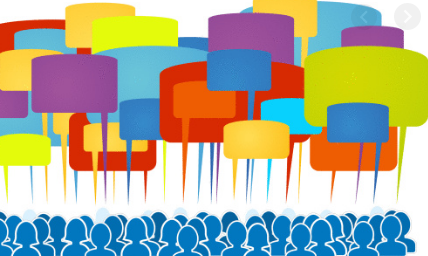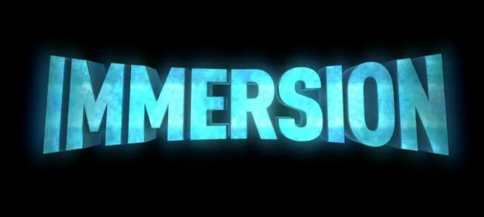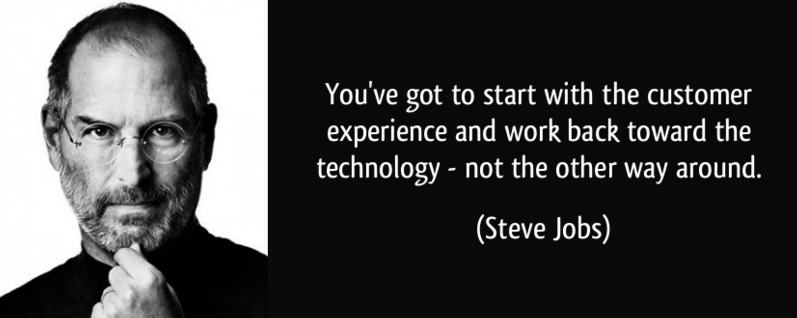Tag: Customer experience design
Customer Experience Design through Data Analytics … a Story of Caesar’s Palace
Have you ever stayed at Caesar’s Palace Casino in Las Vegas? It is a very high-end, luxury casino and hotel on the Las Vegas Strip. It represents high-end customer experience design.

They issue a rewards card to their customers and then use analytics derived from its usage to build models of customer behavior in general and individual customers in particular. So the casino can know what might trigger a good customer to stop gambling and leave.
By using the technology to predict that a customer is about to hit that trigger, a floor manager can stop by with an offer of, say, a discounted buffet meal. Customers start to feel that Caesars’ casinos know and understand them. Other casinos might draw people with glitz. Caesars does it with knowledge and service.
But it’s important to be transparent. If you know too much about customers and they don’t understand why they may get spooked. A little honesty wins a lot of leeway from customers.
Spooked … a good customer experience?
Will this type of honesty win a positive customer experience?
I think not. What is your opinion?
Please share a story on your business’s customer experience design with this community.
Like this short blog? Follow Digital Spark Marketing on LinkedIn or add us to your circles for 3-4 short, interesting blogs, and stories per week.
Read more from Digital Spark Marketing’s blog library:
8 Popular Social Media Initiatives for Customer Engagement
Social Commerce Business … What Ben and Jerry’s Knows That You Should Know
12 Ways to Build Social Commerce Business through Great Customer Service
More reading on customer engagement and social technologies …
What Do Customers Want in the Way of Customer Experience Design?
Lots of things. But at the top of the list is for it to be easy to do business with you. That’s what customer experience design is about. Consider these design features:
Speed:
Most customers don’t want to take a ton of time deciding what to buy. They check with their friends and followers on social media and maybe do research on a few review websites to make their decision. And once their decision is made, they want to be able to pull the trigger … quickly. Don’t introduce any impediments to your buying experience!
Authenticity:
Customers want no games, no gimmicks, and no fine print. They want straight talk — no bait and switch. That means all your touchpoints (website, stores, and so on) need to be using the same real-time information. Oh — and don’t configure your default settings to cheat the consumer. And don’t lie to them, because they’ll find out.
Care:
If customers merely want a transaction, they’ll buy online. For anything else, they probably prefer to be treated like human beings. Like you, consumers have feelings, emotions, and dreams. Don’t turn them into a persona or a segment. Don’t target or quantify them.
If someone’s been a customer of yours for years, you should know that. You should know what she’s bought from you and remember it when she calls in with a question or for service. Her loyalty to you is worth at least some acknowledgment. Do your customers matter to you? If so, know them and show them.
Availability:
Customers will contact you — whether via text, phone, mail, email, tweet, Facebook message, or in-person — when it’s convenient for them, not for you. They don’t care about your operating hours. They expect you to be always on and listening. Don’t expect to limit your hours of availability from 9 a.m. to 4 p.m. when your customers work from 8 a.m. to 5 p.m.!
Ease of use:
People don’t like to follow directions. If you want customers to do something, make the process so easy, so obvious, so intuitively clear that they will be able to follow the path you’ve laid out as easily as water finds the valley floor. Don’t expect consumers to think!
Immediacy:
Customers want it now, unless they want it later, in which case they want it at a specific time, in a specific location, with a call to verify exactly when so they don’t forget.
Reception:
Shhhh. Stop talking. Be quiet and listen. Then do something with what your customers tell you. If you must ask questions, listen to their response. And don’t ask too many questions all at once. Customers don’t like being interrogated. Finally, be clear about what you’re going to do with the information you collect. Your customers’ default position is that you’ll misuse their information. Convince them otherwise.
One-stop shopping:
Don’t shuffle customers around from department to department. They don’t care about your organizational structure, your politics, or who has the real clout in the company. They care about getting their questions answered and their concerns addressed — preferably by the first person they talk to, not the fifth.
Good design:
Customers appreciate beautiful design, even if they never say so. Nobody wants to buy something that doesn’t work well.
Problem-solving:
If something does go wrong, customers need it fixed, and fixed properly.
10 Laws to Help in Consumer Experience Design
We recently posted a blog on the meaning of customer experience and the value of its improvement. We elaborated on learning to view the design from ‘inside out’ and ‘outside in’ simultaneously. Today we examine the ten laws of consumer experience design.
Learn more specifics: Doctor Customer Experience: Clever Techiques Staff Should Employ

Our team at Digital Spark Marketing often gets asked why to emphasize customer experience design. The answer we believe is pretty simple.
Customers remember and value great experiences that demonstrate deep understanding and respect for their needs.
Many will argue that convenience is part of customer service or the customer experience.
I’ll agree with that, but it is becoming so important, that I’m willing to separate it out. There are businesses that use convenience as their sole differentiator.
What is the best customer experience design you have ever put to work for your business? We would love to hear about it. Would you do us a favor and tell us in the comments section? It would be greatly appreciated by our readers and us.
Businesses learn how to deliver and evolve differentiated experiences. As such, they can build robust and enduring customer relationships that enable business growth.
Related: 10 Ways to Employ Customer Experience for Influence
We have defined ten laws of customer experience design that we use in the process of improving the design of our clients’ customer experience. We give a short discussion of these laws here:
Good customer experience … consistency
The idea is to make things more user-friendly by an aesthetic consistency of style and appearance. We recommend defining and implementing a set of standards here.

Co-creation of value
Customer experience innovation is a bottom-up process we believe. Employ your clients in the ideation and design process.
Consumer experience … observations
Frame the experience design in the context of their customers’ actual use. You will receive more ideas by asking what they want.
Customer experience strategy … storytelling
Create better imageries, emotions, and understanding through sharing of stories with your customer communities.

Hierarchy of Needs
Customer experience features must serve the lower level human needs before the high-level needs can begin to be addressed.
Customer experience design … expectation effect
This law refers to ways in which expectations affect perceptions and behavior. When people are aware of a probable outcome, their attitudes and behaviors are influenced in many respects.
Expectation management should be a key component of the design process.
Exposure effect
To obtain a good exposure effect, find the best stimuli to repeatedly present. Find the ones that are best liked, accepted, and shared.
The strongest types of incentives to consider are photos and meaningful phrases
Hick’s Law
This law states that the time required for a customer to make a decision is a direct function of the number of available choices. Providing too many choices is not a good design.
Immersion
A state of customer mental focus can be so high that the awareness of the ‘real’ world is lost. This immersion results in happiness and satisfaction.
Customer life cycle stages
All customer experiences progress through life cycle stages of existence. They must be understood and designed for.
These stages include awareness, consideration, acquisition, service and warranty, and reconsideration.

What is the best customer insight you have ever put to work for your business? We would love to hear about it. Would you do us a favor and tell us in the comments section? It would be greatly appreciated by our readers and us.
Need some help in building better customer trust from your customer experiences? Creative ideas to help grow your client relationships?
Call today for a FREE consultation or a FREE quote. Learn about some options to scope your job and pay for results.
Call Mike at 607-725-8240.
All you get is what you bring to the fight. And that struggle gets better every day you learn and apply new ideas to make your customer experiences better.
When things are not what you want them to be, what’s most important is your next step. Call today.
Test. Learn. Improve. Repeat.
Are you devoting enough energy to improving your continuous learning for yourself and your team?
Mike Schoultz is the founder of Digital Spark Marketing, a digital marketing and customer service agency. With 40 years of business experience, he blogs on topics that relate to improving the performance of your business. Find them on G+, Twitter, and LinkedIn.
Digital Spark Marketing will stretch your thinking and your ability to adapt to change. We also provide some fun and inspiration along the way. Call us for a free quote today. You will be amazed how reasonable we will be.
More reading on customer experience from our Library:
Client Satisfaction …10 Secrets to Improve Customer Experience
Customer Orientation … the Worst Customer Experience Mistakes
Customer Experience Optimization … 10 Employee Actions that Lower It
Building a Customer Experience Strategy for Business Success
Random Acts of Kindness for Customer Experience Improvements
10 Ways to Employ Customer Experience for Influence
Mike Schoultz is a digital marketing and customer service expert. With 48 years of business experience, he consults on and writes about topics to help improve the performance of small business. Find him on G+, Facebook, Twitter, Digital Spark Marketing, and LinkedIn.
23 Ideas to Super Charge Your Customer Experience Design
Customer experience design, CX, is something of the new black in digital right now. CX is the tech industry’s push to humanize UX – UX by definition was product-focused – and that puts the product at the center.

CX starts with the customer and the experience they desire and then works back to the technology from there. And from a business perspective, customers eat users for breakfast – as Tom Peters famously noted every business has just two functions – to win and keep customers. Customers pay, and users – well sometimes they don’t.
What do customers want? Lots of things. But at the top of the list is for it to be easy to do business with you.
That’s what CX is about.
The truth is that ideas need ecosystems to support them and that doesn’t happen overnight. To make an idea viable in the real world it needs to continually connect outward, gaining adherents and widening its original context.
That takes more than an initial epiphany. It takes the will to make the idea subservient to its purpose. What we have to learn to accept is that what makes an idea powerful is its ability to solve problems.
The ideas embedded in the American Constitution were not new at the time of the country’s founding but gained power by their application in the real world. In much the same way, we revere Einstein’s relativity, Pauling’s vaccine, and Jobs iPhone because of their impact on the world.
As G.H. Hardy once put it, “For any serious purpose, intelligence is a very minor gift.” The same can be said about ideas. They do not and cannot stand alone, but need the actions of people to bring them to life.
Here are 23 ideas to expand your customer experience design.
Speed
Most customers don’t want to take a ton of time deciding what to buy. They check with their friends and followers on social media and maybe do research on a few review websites to make their decision. And once their decision is made, they want to be able to pull the trigger … quickly. Don’t introduce any impediments to your buying experience!
Knowledge
If someone’s been a customer of yours for years, you should know that. You should know what she’s bought from you and remember it when she calls in with a question or for service.
Her loyalty to you is worth at least some acknowledgment. Do your customers matter to you? If so, know them and show them.
Ease of use
People don’t like to follow directions. If you want customers to do something, make the process so easy, so obvious, so intuitively clear that they will be able to follow the path you’ve laid out as easily as water finds the valley floor. Don’t expect consumers to think!
Availability
Customers will contact you — whether via text, phone, mail, email, tweet, Facebook message, or in-person — when it’s convenient for them, not for you. They don’t care about your operating hours.
They expect you to be always on and listening. Don’t expect to limit your hours of availability from 9 a.m. to 4 p.m. when your customers work from 8 a.m. to 5 p.m.!
Authenticity
Customers want no games, no gimmicks, and no fine print. They want straight talk — no bait and switch. That means all your touchpoints (website, stores, and so on) need to be using the same real-time information.
Oh — and don’t configure your default settings to cheat the consumer. And don’t lie to them, because they’ll find out.
Care
If customers merely want a transaction, they’ll buy online. For anything else, they probably prefer to be treated like human beings. Like you, consumers have feelings, emotions, and dreams. Don’t turn them into a persona or a segment. Don’t target or quantify them.
Keeping it simple stupid (KISS)
The agent kept the email as simple as possible. Using simple language and grammar. There was adequate spacing/paragraphing. This email can be understood by virtually anyone.
Reception
Shhhh. Stop talking. Be quiet and listen. Then do something with what your customers tell you. If you must ask questions, listen to their response. And don’t ask too many questions all at once. Customers don’t like being interrogated.
Finally, be clear about what you’re going to do with the information you collect. Your customers’ default position is that you’ll misuse their information. Convince them otherwise.
One-stop shopping
Don’t shuffle customers around from department to department. They don’t care about your organizational structure, your politics, or who has the real clout in the company.
They care about getting their questions answered and their concerns addressed — preferably by the first person they talk to, not the fifth.
Problem-solving
If something does go wrong, customers need it fixed, fixed properly, and fixed now.
Pulling away from the conventional
When I sent an inquiry through to Amazon, I received an auto-response that stated: “We answer most emails in less than 12 hours.” This is a slight variation from the conventional auto-response from most companies.
Most companies will state that a reply will be given within 24 or 48 hours. Amazon is among the very few companies that use the unique time-frame of 12 hours.
Keep the promise
The auto-response stated I will receive an email in less than 12 hours- Amazon fulfilled this promise. The auto-response came through at 22.38 pm and the actual customer support email was delivered by 7:09 am.
It took approximately 8 hours and 31 minutes to receive a support reply. This is simply a promise kept- a reply that came through in less than 12 hours.
Possibility and positivity
This might sound silly to some but customers that send through an inquiry are sometimes triggered by worry. We worry that our order may have been delivered to the wrong address or that our bill may have been wrongly calculated.
Worry and anxiety in some of these cases propel customers to send through an inquiry. The second paragraph from the agent was full of possibilities. It also had a positive tone that will calm any customer’s nerves.
Thanking the customer for the inquiry
As companies try to dissuade customer inquiries via email, they are putting more effort into expanding the frequently asked questions section. Not all companies appreciate or thank the customer for reaching out.

After addressing me, the agent thanked me for contacting their seller support department. Thanking the customer will always work magic in the CX journey.
Recap the customer’s inquiry
Nothing puts off a customer like a blanket email response void of personalization. Amazon showed they read my email inquiry by recapping my inquiry in the first paragraph of the email.
It was not copied and pasted but being rephrased and prefixed with “I understand….” It showed the agent read my question and is reaffirming his understanding of it.
.
Customer journey
Marketers need to predict and monitor the customer journey, not the sales cycle. When marketing and sales deliver the right information at the right time, they are able to build relationships and let the customer choose the direction.
This includes inbound marketing tactics like offering premium content the customer downloads after submitting profile information, which helps to identify qualified leads and provide more relevant information in subsequent interactions.
Customer conversations
Conversations need to take place in real-time. Thanks to real-time decision technology, organizations have the to ability deliver a personalized experience to each customer or prospect right at that moment of interaction — be it lunch on a weekday or one in the morning.

Give them what they need, when they need it, and structure your digital ecosystem so that consumers can discover more through serendipity, not by you forcing it on them.
Relevance and personalization
Relevance and personalization are key. Customers get vocal and often discredit the company and its communication when they encounter marketing and advertising that doesn’t speak to their needs and interests.
In one recent example — and there are countless others — a photo service sent out emails congratulating customers on having a baby. The problem was the email went out to the company’s entire list, which included people who had not welcomed a new bundle of joy and were offended.
The secret to delivering a tailored experience is collecting data, using it to show your audience you understand them, looking at analytics to find opportunities for improvement, and optimizing continuously.
Solving problem
Marketing content has to be about solving problems, not selling products. Today’s consumers are sophisticated and wary of blatant marketing efforts.
Every communication needs to address critical challenges and pain points and answer “what’s in it for me” for every customer. You’ll know your messaging is resonating if people are sharing your content.
Brand experience
Brand interactions need to be consistent across all channels. Whenever and wherever someone interacts with your brand, the experience needs to build upon everything that came before and flow seamlessly into what they do next.

Again, this is a challenge aided by technology. If a customer calls a contact center, wouldn’t it be good to know in real-time that the customer had recently opened an email about a particular product, and read six web pages about that product?
Marketers and CRM specialists need to maintain an interaction data store so that the history and meaning of previous interactions can be factored into the personalized next-best-action decision engine. Attribute data about a person and people like that person is no longer enough to make optimal real-time decisions in this omnichannel world.
Being with your customers
Omni-channel capabilities will be critical. Today’s marketing is all about meeting your customers where they are, regardless of channel or platform. If your audience spends time on Twitter or Pinterest, so should you.
If they’re mostly on tablets and phones, consider a mobile app. But all of this technology needs to work together to avoid mixed or misdirected messages, like the example given in rule No. 3.
Always do what you say
Don’t make a promise you can’t keep. You can’t just tell people they’re important to you; you need to show it in everything you do and say. That includes addressing issues and complaints promptly and professionally, as well as asking permission and earning trust at every interaction.
It’s important to note that changing the minds of your fellow marketing team members might not be easy at first, but the first step is to commit to changing the focus from campaign-oriented marketing to real-time marketing.
You need to devise a plan and shift and gather the right team to develop a holistic, long-term strategy — then get ready to put those plans into motion. The organizations that embrace this new reality will be the ones that rise to the top.
The bottom line
These are a few insights as to why the best companies excel in customer experience. The customer experience is the next competitive battleground. I believe companies will continue to aspire to climb up the CX ladder. Some get the basics and priorities wrong.
I do think one of the basics was poignantly summed up as:
You’re customers don’t care how much you know until they know how much you care.
You’ve got to really care about your customers in a bid to get up the ratings.

Do you have a lesson about making your customer experience better you can share with this community? Have any questions or comments to add in the section below?
So what’s the conclusion? The conclusion is there is no conclusion. There is only the next step. And that next step is completely up to you.
All you get is what you bring to the fight. And that fight gets better every day you learn and apply new lessons.
When things go wrong, what’s most important is your next step.
Test. Learn. Improve. Repeat.
Mike Schoultz is the founder of Digital Spark Marketing, a digital marketing and customer service agency. With 40 years of business experience, he blogs on topics that relate to improving the performance of your business. Find him on Twitter, and LinkedIn.
Digital Spark Marketing will stretch your thinking and your ability to adapt to change. We also provide some fun and inspiration along the way.
More reading on marketing strategy from Digital Spark Marketing’s Library:
Pinterest Marketing … Rich Pin Tips for Discovery Shopping
Improve Success with Small Business Tagline Designs
How to Getting Small Business Press Coverage
Secrets to BMW Marketing Videos … Effective Campaign?
10 Laws of Customer Experience Design
We recently posted a blog on the meaning of customer experience and the value of improvement in customer experience design. We elaborated on learning to view the design from ‘inside out’ and ‘outside-in’ simultaneously.

When considering why convenience has become a key differentiator in customer experience, the answer is right in our faces: We all have busy lives; we’re all pulled in multiple directions all day long. Given an alternative, does anyone want less convenience or to spend more time on their to-do list?
This idea isn’t really new. Corner markets and convenience stores aren’t just competing with the big-box superstores, they flourish. Why? The reason is in their names: They’re right where their customers are, and they’re convenient.
They don’t usually have lines, and they don’t have aisles and aisles of choices to sift through. They’ve established just what their shoppers want to be able to run in and grab, be it a hot snack, a cold drink, or gas for the car and ice cream for the kids.
Taking this one step further, let’s consider the downside of limitless choices. In quick and convenient customer experience, the customer doesn’t want to wander around, get lost or distracted, or hit a dead-end on their way to achieving their goal for the transaction; in fact, getting in and out easily with exactly what they need is an integral part of the goal.
The industry disruptors like Amazon are the ones who latch onto this reality and work to not only be proactive and easy on their customers today but to look ahead and implement what will be quick and convenient tomorrow.
For instance, the most effective chatbots are programmed to recognize when a customer is struggling and to effortlessly deliver that customer to a live customer service agent.
Changing your approach so that each part of the customer experience is created around your customers’ definition of what is convenient is what creates loyalty today. Have you gone through your own company’s customer journey recently? If you were a customer, would you feel your company is easy to do business with?
Our team at Digital Spark Marketing often gets asked why emphasize customer experience design. The answer we believe is pretty simple. Customers remember and value great experiences that demonstrate deep understanding and respect for their needs.
When businesses learn how to deliver and evolve differentiated experiences, they are able to build strong and enduring customer relationships that enable business growth.
We have defined 10 laws of customer experience design that we use in the process of improving the design of our clients’ customer experience. Today we examine the 10 laws of customer experience design. We give a short discussion of these laws here:
Consistency
The idea is to make things more user-friendly by aesthetic consistency of style and appearance. We recommend defining and implementing a set of standards here.
Co-creation of Value
Customer experience innovation is a bottom-up process we believe. Employ your customers in the ideation and design process.
Observations

Frame the experience design in the context of your customers’ actual use. You will receive fewer ideas by asking what they want.
Storytelling
Create better imageries, emotions, and understanding through sharing of stories with your customer communities.
Hierarchy of needs
Customer experience features must serve the lower-level human needs before the high-level needs can begin to be addressed.
Expectation effect
This law refers to ways in which expectations affect perceptions and behavior. When people are aware of a probable outcome, their perceptions and behaviors are affected in many ways. Expectation management should be a key component of the design process.
Exposure effect
To obtain a good exposure effect, find the best stimuli to repeatedly present. Find the ones that are best liked, accepted, and shared. The strongest types of stimuli to consider are photos and meaningful phrases
Immersion
This law states that the time required for a customer to make a decision is a direct function of the number of available choices. Too many choices are not a good design.

A state of customer mental focus so great that the awareness of the ‘real’ world is lost … resulting in happiness and satisfaction.
Customer life cycle stages
All customer experiences progress through life cycle stages of existence … all of which must be understood and designed for. These stages include awareness, consideration, acquisition, service and warranty, and reconsideration.
The bottom line
Our job as marketers is to do the hard work of finding and nurturing charismatic ideas on customer experience we can be proud of. One place to start is to look at the ideas you’re trying to spread.
Consider whether they’re charismatic enough to earn the effort you’re putting into them–and if not, how to replace them with ideas that are.

